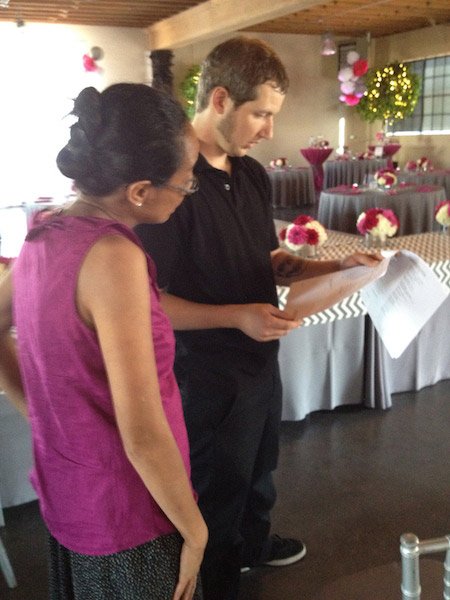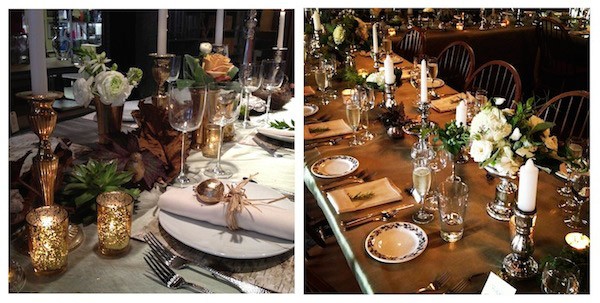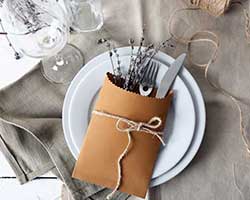To be successful when working with an event-planning client, you must have insight into their inner thought process, motivations, and goals. Often, what a client says and what they are really thinking are unclear for various reasons:
- They don’t want to look uneducated.
- They are unsure of the options.
- They have outside influences such as committees or pressure from family or peers.
Here are some ways to find out what your event-planning client really wants. The first two are based loosely on two well-known psychological principles.

1. Use personality types. Evaluating your client’s personality type can help you learn what they want at their event. It’s possible to divide your customers into four broad types based on the Myers Briggs™ Personality Type Indicator. (Thanks to Liene Stevens of ThinkSplendid.com for introducing these concepts to me during a 2009 seminar.)
You can picture these four personality types using examples of TV characters from The Simpsons, Sex in the City, and Friends.
Competitive — Bart, Samantha, Monica
"What can you do for me?"
These clients are driven, focused, and goal-oriented. Event elements that may appeal to these clients include advantages, profits or savings, and outdoing others.Spontaneous — Homer, Carrie, Phoebe
"Why is this the best option?"
These clients are idealistic, optimistic, and want to associate their event with recognition or awards. Event elements that may appeal to them include ones that are exciting and creative, earn them praise, or use service providers who garner a lot of press and accolades.Methodical — Maggie, Miranda, Ross
"What happens next? What are the next steps?"
These clients want a professional, step-by-step approach to their event and are mindful of the entire process and the policies involved, and the credentials of the person they’re working with. Event elements that may appeal to these clients include superior logistics, organization, and a cohesive "big picture."Humanistic — Marge, Charlotte, Rachel
"Who else is doing it this way?"
These clients care about people and feelings, are interested in celebrities and brands, and want to connect emotionally and expressively through their event. Event elements that may appeal to these clients include top-level brands and ideas that boost morale and convey a high level of social status.
2. Mirror body language and rephrase or repeat. By copying your client’s body language and rephrasing or repeating their statements to them, you subconsciously set yourself up to empathize with them and simultaneously build a rapport with the client. Your client is more likely to feel comfortable and open up to you. Your listening skills must be top-notch to do this, and it’s not possible to pitch an idea to your client at the same time — this is an exercise in absorbing, not sending out. Also, keep in mind that the goal is to mirror and reflect in order to practice empathy and establish true rapport, not to simply mimic, which the client could perceive as insincere and untrustworthy.
In addition to the two psychology-based methods above, the following techniques are also good strategies for seeing into the mind of your event-planning client:
3. Target the goal. If details are confusing or hard to pin down, instead ask them what they want to accomplish with the event. Then ask why they want to accomplish this. Help them work backwards from their goal, and then offer event elements and details that support it.
4. Find contextual clues. Context is important — what your client tells you about surrounding influences gives you clues into what they want and their ultimate goals for the event. For example, some clients will have a hard and fast budget number. However, oftentimes they are not familiar with how events are priced and what they cost, so you may have to extrapolate the budget indirectly from puzzle pieces. If a wedding planning client talks about specific brands and vendors, you can build an event budget around that budget level. Then, confirm by showing them the specific numbers and asking, "Is this what you had in mind?"

5. Get buy-in or onboarding. This is especially useful during the design and décor process.
- Continue to mirror and listen.
- Don’t simply follow an event-planning checklist throughout the process. First ask what hot button issues are on their mind before putting your client through your standard process.
- Send samples at key milestones to confirm decisions, and organize vendor contracts into easy-to-understand summaries.
- Ask for positive affirmation from clients at each milestone step: "Is this the right direction?" "Can we enter this floral design into your file as the final version?" This way you avoid surprises or client unhappiness when all the elements are put together at the final execution of the event.
Bonus: Want to become a professional wedding and event planner? Enroll in the New York Institute of Art and Design's Event Planning Course today!







